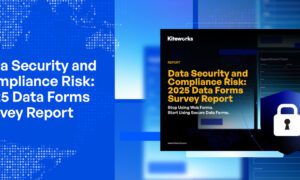In today’s data-driven world, understanding customer feedback remains important for businesses and organizations that seek to improve products, services, and overall customer experience.
Metrics of value come from quantitative survey data.
Qualitative, free-form text responses often reveal the most authentic as well as subtle perceptions, however.
An approach that is powerful for transformation of open-ended survey feedback into actionable intelligence is exactly where survey text analysis comes into play.
Why Survey Text Analysis Matters
Open-ended survey responses can provide raw and unfiltered opinions that do explain just “why” behind any customer ratings and behaviors.
However, manual analysis of thousands of text responses is time-consuming and prone to inconsistency.
Text analysis of surveys automates and structures the process enabling organizations to do this:
- Quantify qualitative data: Convert free-text into measurable categories and sentiment scores.
- Identify emerging trends: Detect new issues or improvements over time.
- Gain granular insights: Understand specific topics customers discuss and their emotional tone.
- Support decision-making: Provide evidence-based recommendations for product or service enhancements.
Key Techniques in Survey Text Analysis
Current leading blogs and platforms emphasize a combination of methods to maximize the value extracted from survey text data.
The two primary techniques are:
1. Topic Analysis
This means classifying textual answers.
Meaningful themes or topics emerge from that content.
For improved accuracy, advanced platforms build customized taxonomies that are tailored to the context of the organization, like feedback regarding a meal-kit delivery service that might get grouped into topics such as “Meal Quality,” “Delivery Speed,” and “Customer Support.”
2. Sentiment Analysis
Sentiment analysis categorizes the emotional tone of responses as positive, negative, or neutral.
More advanced models have to go beyond just basic categories for the detection of more specific emotions.
Frustration, satisfaction, or urgency could be examples of such emotions.
This helps organizations know about what customers are talking about and what their feelings are.
“Topic-based sentiment analysis” is a powerful method that combines topic and sentiment analysis for revealing the extent to which product or service aspects get commended or get criticized.
How to Conduct Survey Text Analysis: A Step-by-Step Approach
Drawing from expert blogs and guides, here is an effective framework for conducting survey text analysis:
1) Collect and Prepare Data: Gather all open-ended responses from your surveys and clean the data by removing duplicates, correcting typos, and standardizing text.
2) Choose the Right Tools: Select text analysis software that leverages machine-learning based natural language processing (NLP) for higher accuracy. These platforms can automatically categorize topics, detect sentiment, and even infer intent and urgency without manual taxonomy building.
3) Apply Topic Modeling: Use algorithms to identify recurring themes in the text. This can be done through keyword-based tagging or more advanced machine learning models that understand context and semantics.
4) Perform Sentiment Analysis: Analyze the emotional tone of each response, classifying them into positive, negative, or neutral categories, or more granular emotional states.
5) Visualize and Interpret Results: Present findings using dashboards, word clouds, or sentiment trend graphs to make insights accessible to stakeholders.
6) Act on Insights: Use the analysis to identify pain points, validate hypotheses, and guide improvements in products, services, or customer support.
Benefits of Using Machine Learning for Survey Text Analysis
Machine-learning NLP models stand out by learning from data patterns and continuously improving their accuracy.
Unlike simple keyword tagging, these models can:
- Understand misspellings, slang, and omitted words.
- Detect multiple topics and sentiments within a single response.
- Adapt to new contexts without extensive manual intervention.
For example, a response like “I love the nutritious meals, but had trouble with payment” can be automatically tagged with positive sentiment for “Meal Quality” along with negative sentiment for “Payment Issues,” and this provides a subtle view of customer feedback.
Practical Applications and Impact
Survey text analysis is invaluable across industries for:
- Customer Experience Management: Quickly pinpoint drivers of satisfaction or dissatisfaction.
- Product Development: Gather detailed feedback to prioritize features or fixes.
- Marketing: Understand customer language and sentiment to tailor messaging.
- Operational Improvements: Identify service bottlenecks or process issues.
By quantifying and tracking these insights over time, organizations can measure the impact of changes and continuously refine their strategies.
Conclusion
Organizations do increasingly acknowledge the importance of qualitative feedback so they do use survey text analysis.
For survey text analysis, it extracts meaningful perceptions from free-form responses so it is a necessary tool.
By combining topic and sentiment analysis through machine learning, businesses can unlock a deeper comprehension of customer experiences and emotions.
For those looking to enhance their survey analysis capabilities, learning how to conduct survey text analysis effectively is the first step toward turning raw text data into strategic advantage.



































